User:Simon/Special Issue 8/knotboard knots nodes: Difference between revisions
No edit summary |
No edit summary |
||
| Line 10: | Line 10: | ||
The knotboard I had made in the first half of the trimester proved a useful tool for thinking with my hands. I noticed that as a physical object, it was different from my drawings as it immediately had depth, and form, and as a result was affected by light, particularly shadows:<br> | The knotboard I had made in the first half of the trimester proved a useful tool for thinking with my hands. I noticed that as a physical object, it was different from my drawings as it immediately had depth, and form, and as a result was affected by light, particularly shadows:<br> | ||
[[File:knot board 09.jpg|640px]] | [[File:knot board 09.jpg|640px]] | ||
[[File:knot board 10.jpg]] | [[File:knot board 10.jpg|640px]] | ||
[[File:knot board 11.jpg]] | [[File:knot board 11.jpg|640px]] | ||
[[File:knot board 12.jpg]] | [[File:knot board 12.jpg|640px]] | ||
<br> | <br> | ||
Revision as of 15:06, 8 April 2019
A key reference point for my investigations into network topologies began with the klein form.
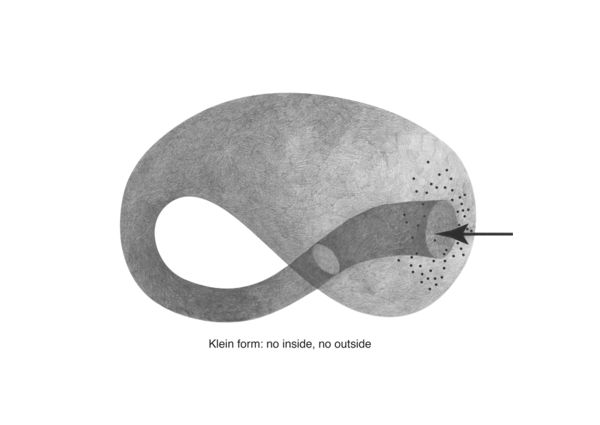
Klein forms are the basis for klein worms; illustrated in Radical Software:
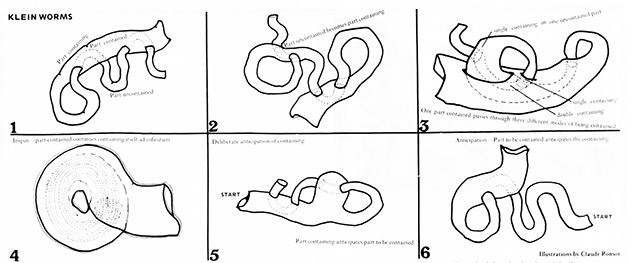
The knotboard I had made in the first half of the trimester proved a useful tool for thinking with my hands. I noticed that as a physical object, it was different from my drawings as it immediately had depth, and form, and as a result was affected by light, particularly shadows:
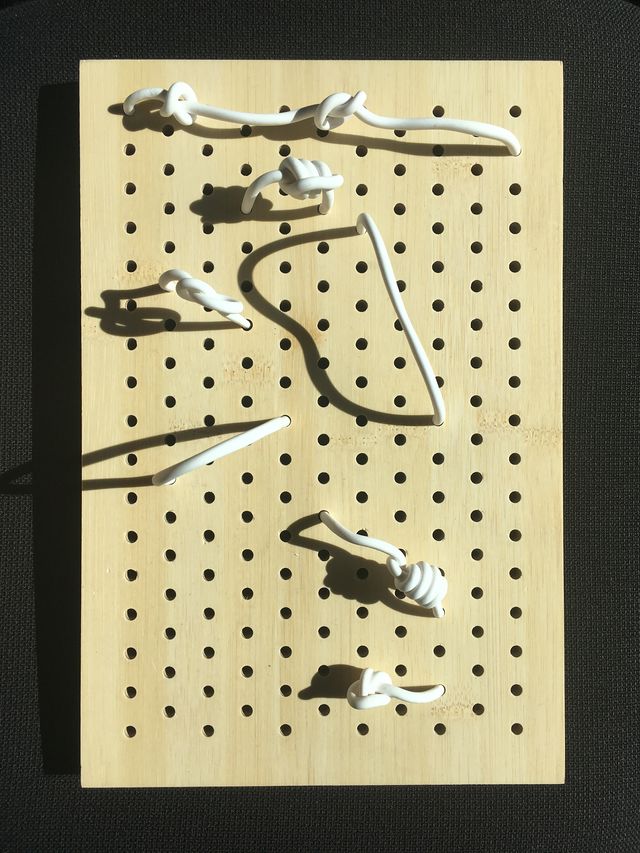
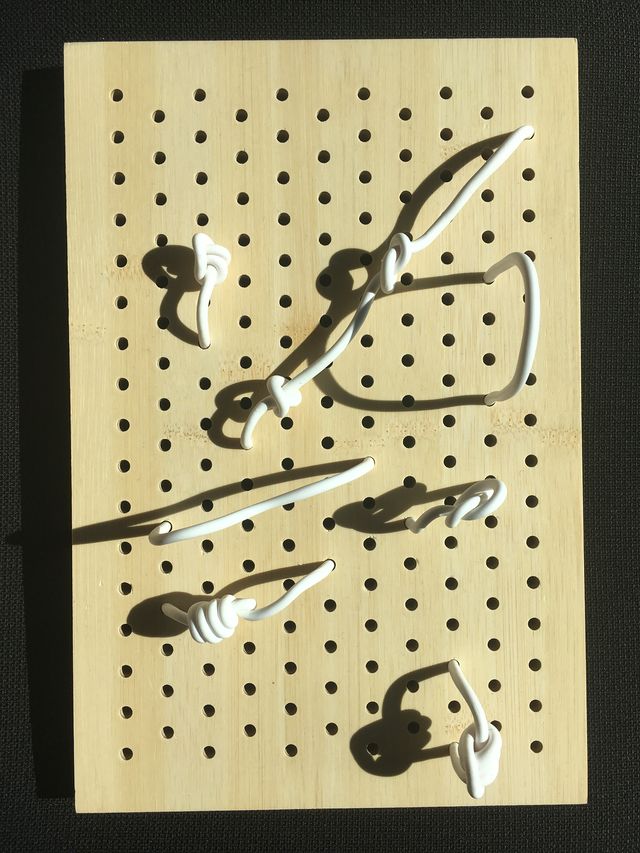
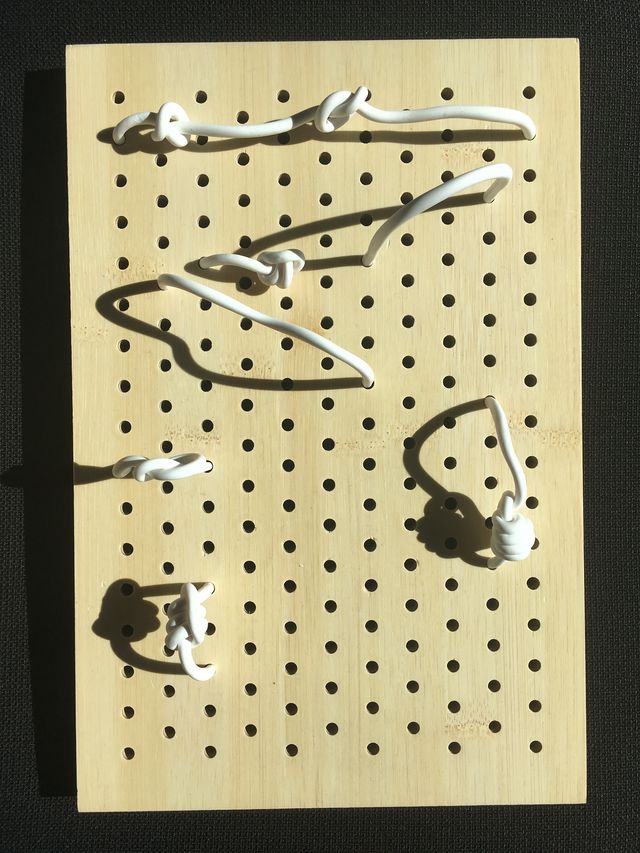
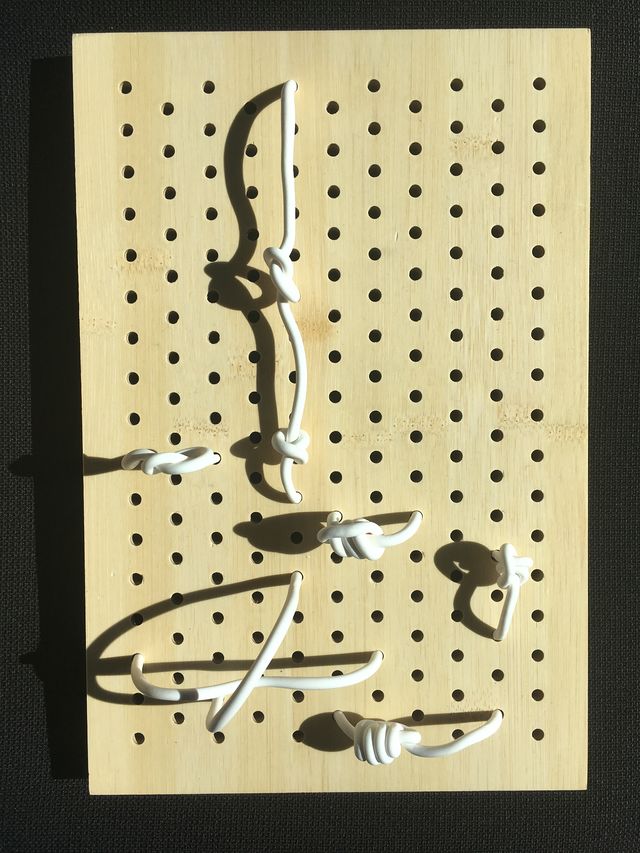
When configured in different ways, the knotboard took on a different presence. I made drawings from this, incorporating light and shadow as well as alternative ways of imagining the three-dimensional space the knotted links occupied:
Research into knot theory (a field of mathematics which studies the topology of knots) led me to discovering mathematical knots, which are different from the usual idea of a knot. I had previously explored knots as ways to record numbers (a notable reference being Quipu from ancient Andean cultures):
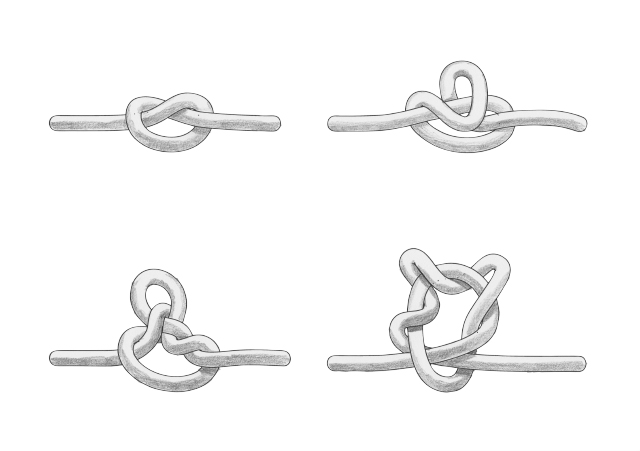
Mathematical knots are different, in that they are based on the embedding of a circle into three-dimensional Euclidean geometry R3. As such, they resemble closed loops. The first of these is the "unknot":
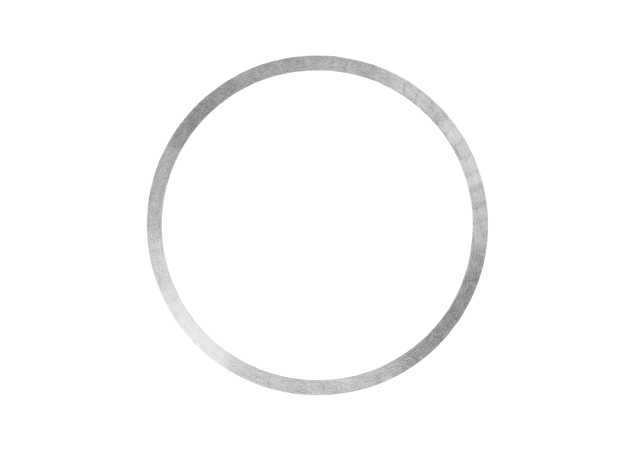
I imagined knots as nodes, which when unraveled would reveal that the node and the link are the same:
Visualisation is a powerful tool when communicating alternative ways of thinking and "seeing" things. Through visualisation, I found another way of thinking about nodes
